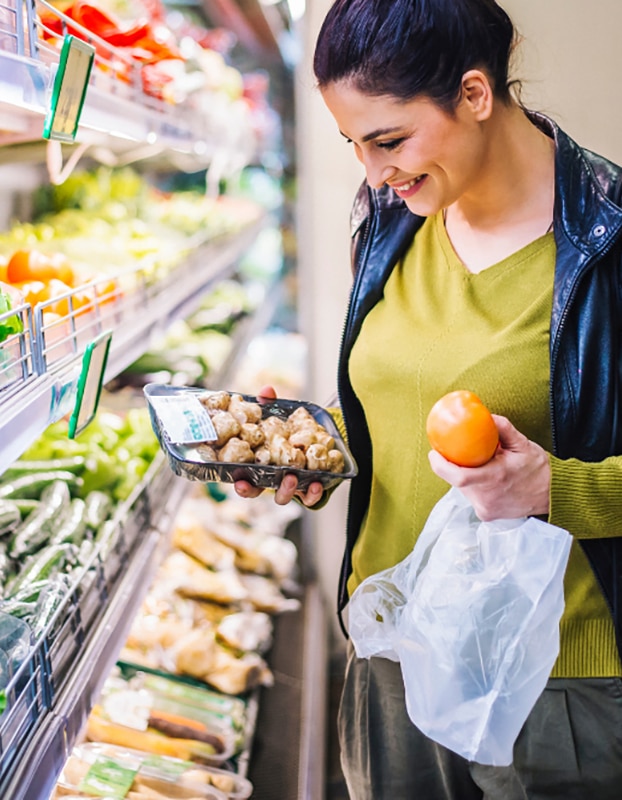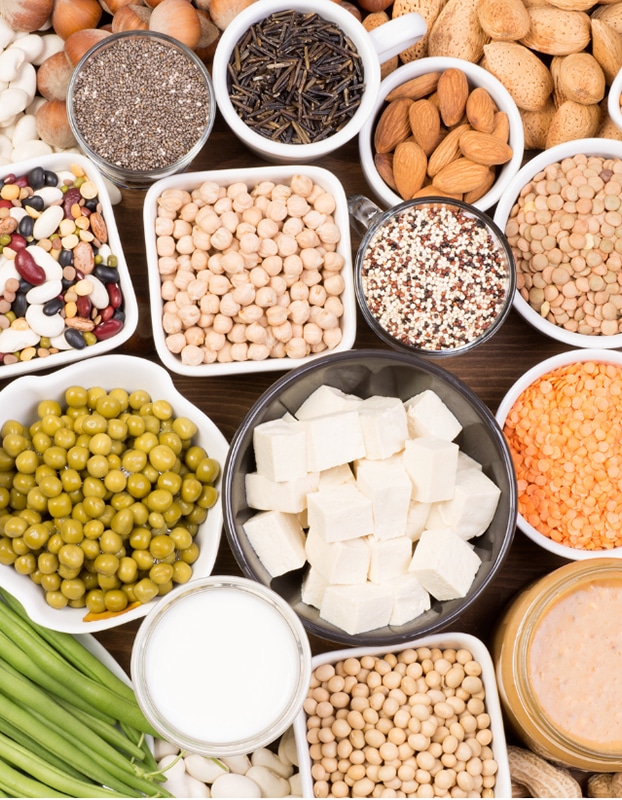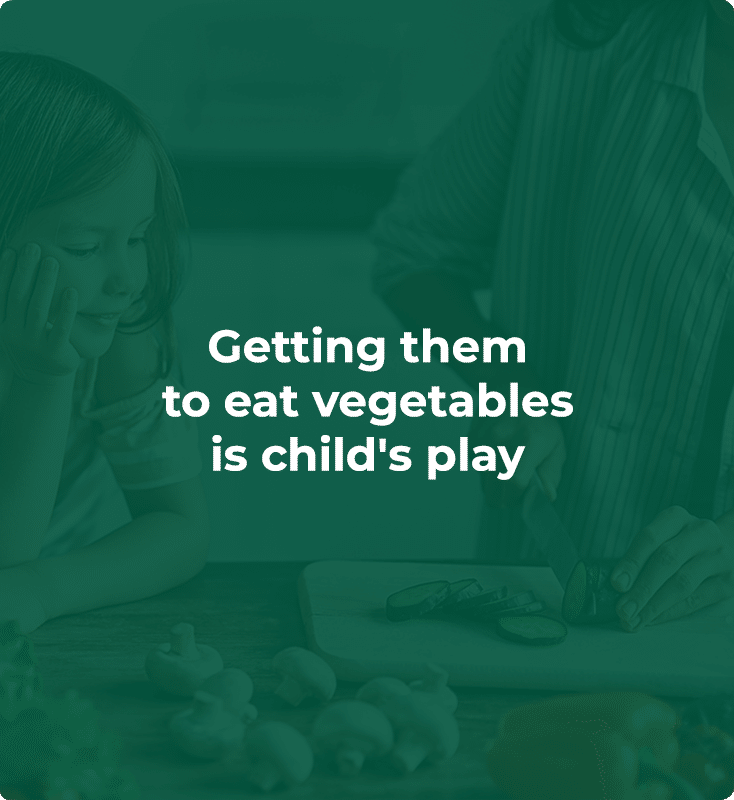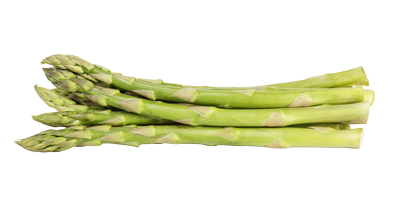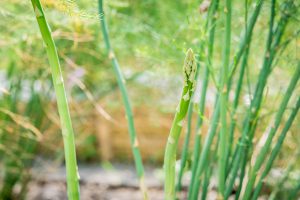Recipes we love
See all recipes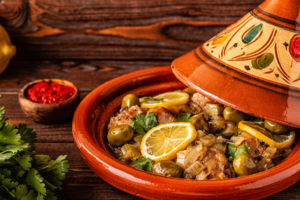
Italian-style asparagus
A substantial, highly nutritious starter that’s low in calories. Even cooked or from a jar, asparagu...
Flan with eggplant and tomato
An original side dish that will excite the taste buds of the finest palates. This recipe provides po...
Sandwich filled with asparagus cream and olives
An asparagus recipe ideal for evening meals. Full of vitamins and minerals that will help maintain n...
HEALTH
BENEFITS
An intestinal broom
Asparagus is rich in fiber, which is essential for health generally, and intestinal health in particular. This is what gives it this eloquent nickname!
A wealth of vitamin B9
But its real nutritional characteristic is its richness in vitamin B9 (also known as folic acid or folate), which is very important in the first three months of pregnancy. Asparagus is one of the foodstuffs that contain the most vitamin B9, just after beef liver and certain legumes. Did you know that the vitamin B9 content of canned asparagus is similar to that of fresh asparagus after cooking? Additionally, folic acid can reduce fatigue and play an important role in the immune system.
Adding fragrance to… your flush
Asparagus is very low in sodium, but contains potassium, which is important for proper functioning of the nervous system and muscles, and for blood pressure. It also has a natural….“fragrance”! That characteristic smell of urine after eating asparagus is due to the presence of sulfur compounds called mercaptans.
Raw asparagus is also:
A source of vitamin C, which is essential for energy metabolism, and ensuring that the immune and nervous systems, and psychological functions, work well. Additionally, vitamin C helps iron absorption. It is particularly important for vegetarians and vegans. Please be aware that vitamin C is water-soluble, so asparagus boiled in water contains considerably less of it. Trick: reuse the water you have cooked the asparagus in as a broth for a soup or a sauce, to get more flavor and nutrients!
Asparagus further contains antioxidants (flavanoids and carotenoids). But these are present only in asparagus with color: Purple and green asparagus contain a lot more flavanoids and carotenoids than the white ones (which also have less vitamin C).
NUTRITIONAL
COMPOSITION
WHEN IS THE RIGHT
TIME TO EAT ASPARAGUS?
Spring
Asparagus are picked only from mid-May to the end of June. Grown worldwide, fresh asparagus can already be found on the shelves as early as March, but rarely beyond June.
VEGETABLE PATCH
OR URBAN BALCONY?
Growing asparagus is complex and picking them is technical and fast. Asparagus is a herbaceous, perennial plant with a rhizome (a subterranean stalk), which likes sandy, light, deep and well-drained soil.
To learn everything you need to know about growing asparagus, read the page on growing advice. Find more growing tips.
CHOOSING
AND STORING ASPARAGUS
Choose your asparagus well :
- It’s an art in itself! The stalks must be firm and brittle, of equal thickness (to cook evenly) with a tight tip.
- The moister the heel (lowest part) is, the more recently it was picked.
- Green asparagus must be evenly colored from tip to end.
How to store your asparagus :
Asparagus is fragile and must ideally be eaten within three days, for the longer it is kept, the more fibrous it will become (especially if it is stored at room temperature).
Use the vegetable drawer in the refrigerator and apply one of these two techniques:
- First wrap the base of the bunch in moist kitchen towel or a damp cloth, and then put them uprightin a plastic bag or a second cloth.
- Or place them vertically in a bowl with 5 cm of water.
Once they are cooked, eat them quickly, or they will lose their taste and become limp.
To enjoy them for a longer period in the year, you can blanch them for 3 minutes in boiling water and then keep them for 8 months in the freezer.
ANTI-WASTE TIPS
Don’t throw away asparagus peelings before fully benefiting from them! You can boil them in water, and then use the broth to make a soup or sauce. They give a flavor to the water and add nutrients, such as vitamin C. All you need to do it remove the peelings before mixing – that’s it!
Does your recipe only use the tender asparagus tips? Then pan fry the rest of the asparagus, sliced or finely ground, and serve as a side or an appetizer with a little oil and some pepper, and sprinkled with Parmesan.
WHAT IS
THE ENVIRONMENTAL IMPACT?
The Product Environmental Footprint (PET) tells us more! This is a score, calculated by Agribalyse*, which takes into account all of the stages of a vegetable’s life cycle: how it is grown, the impact of transport and processing, and so on. The lower the score, the lower the environmental impact.
*Data taken from the Agribalyse database, which records the environmental score of food items. This unique score is an average of 16 indicators, calculated according to the European PEF methodology. It does not correspond to an environmental label or “eco-score”.
CO2 equivalent: For 100 g of raw, peeled asparagus: 0.23 kg of CO2e, which is the same as 8 g of raw beefsteak.
TIPS
AND TRICKS
How to prepare them
Green asparagus are the only ones that do not need to be peeled; simply wash them.
Note: Don’t peel the tip of white or purple asparagus; stop three centimeters before the tip.
Some indications for cooking time:
The most complicated part of preparing asparagus is of course cooking it. The tips must always point upwards:
- 20 minutes: for white or purple asparagus, tying the bundle with string in a pot of boiling water (there are even pots with a specific format) or in the oven, in paper parcels.
- 10 minutes: In a pressure cooker, always for white or purple asparagus.
- 5 minutes: for all kinds of cooking for green asparagus. Once they are cooked, plunge them in a bowl of ice water to best preserve their green color.
Avoid the microwave: the maximum temperature (up to 100°C) is not high enough to soften them.
Asparagus goes well with…
Like to keep things simple? So does asparagus! Try them doused in a vinaigrette with old-fashioned mustard, some fresh herbs and chopped hazelnuts. Flemish-style asparagus, a Belgian specialty with a hard-boiled egg and melted butter, is a true delight!
White asparagus is excellent in soup or with creams, but also au gratin. Chopped in pieces, they can be used in a quiche, an omelet, a savory crepe or risotto. They also go well with poultry, mild cheeses and white meats.
Green asparagus is delicious with eggs, cheese like Parmesan, spinach, fish, cream and herbs.
CAN EVERYONE
EAT IT?
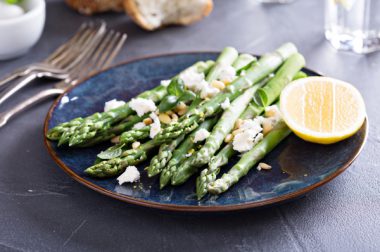
Young children
Asparagus has subtle flavors that are not only for adults: little ones will love eating them with their fingers from the age of 8 months. Make sure they are well cooked, and pick out the most tender part for them: the tips.
And for others…
The softness of asparagus makes them ideal at any age. The subtle taste is a treat for all food lovers.
See plenty of other tips for encouraging children to eat vegetables.
WHERE DO THEY COME FROM?
ORIGINS AND VARIETIES
Origins
More than 60 countries worldwide produce asparagus, with temperatures that vary from cool to tropical. China is the biggest producer, ahead of Germany, Spain, Italy and France. The biggest consumers of asparagus are Peru, the USA, Japan, Mexico, Spain and Germany, followed by Greece, Switzerland and the UK.
Varieties
The main varieties include:
- White asparagus (70% of the overall production) is grown without exposure to air and sunlight (covered with soil or “earthed up”).
- Purple-tipped asparagus (20%) of which the tip has broken through the soil and taken color.
- Green asparagus (10%), which grows exposed to air.
- More rarely one finds “purple-green” asparagus of which the stalk remains buried (white), with 1/3 exposed to air (green) and a purple tip.
Labels and Protected Geographical Indications
There are numerous labels and Protected Geographical Indications (PGI) that are used as quality criteria for asparagus. The most acclaimed asparagus are Italian: the pink-tipped asparagus of Mezzago, and the green or purple asparagus from Albenga.



 Bean sprouts
Bean sprouts  Artichoke
Artichoke  Vegetable garden: growing chestnuts
Vegetable garden: growing chestnuts 


